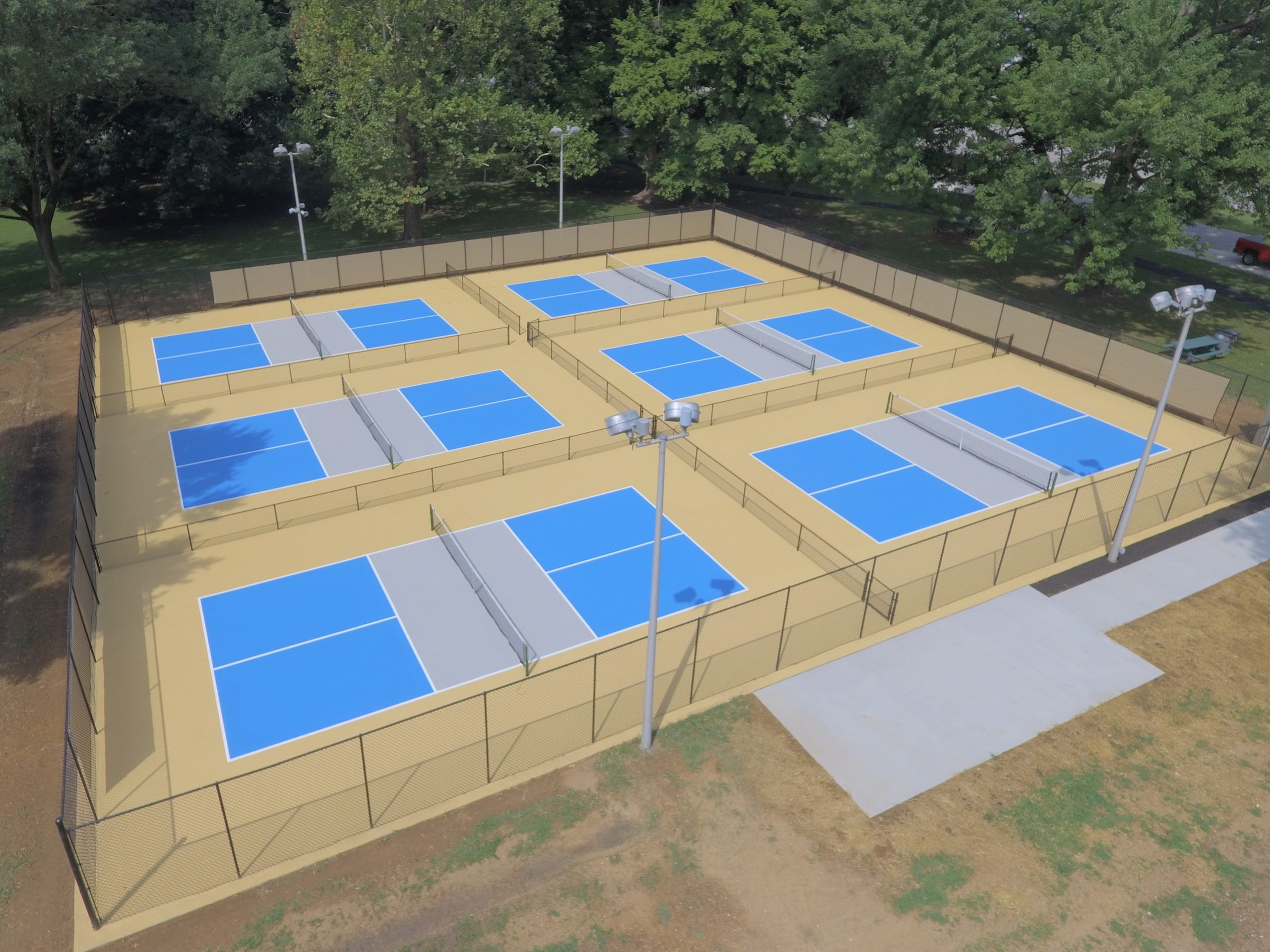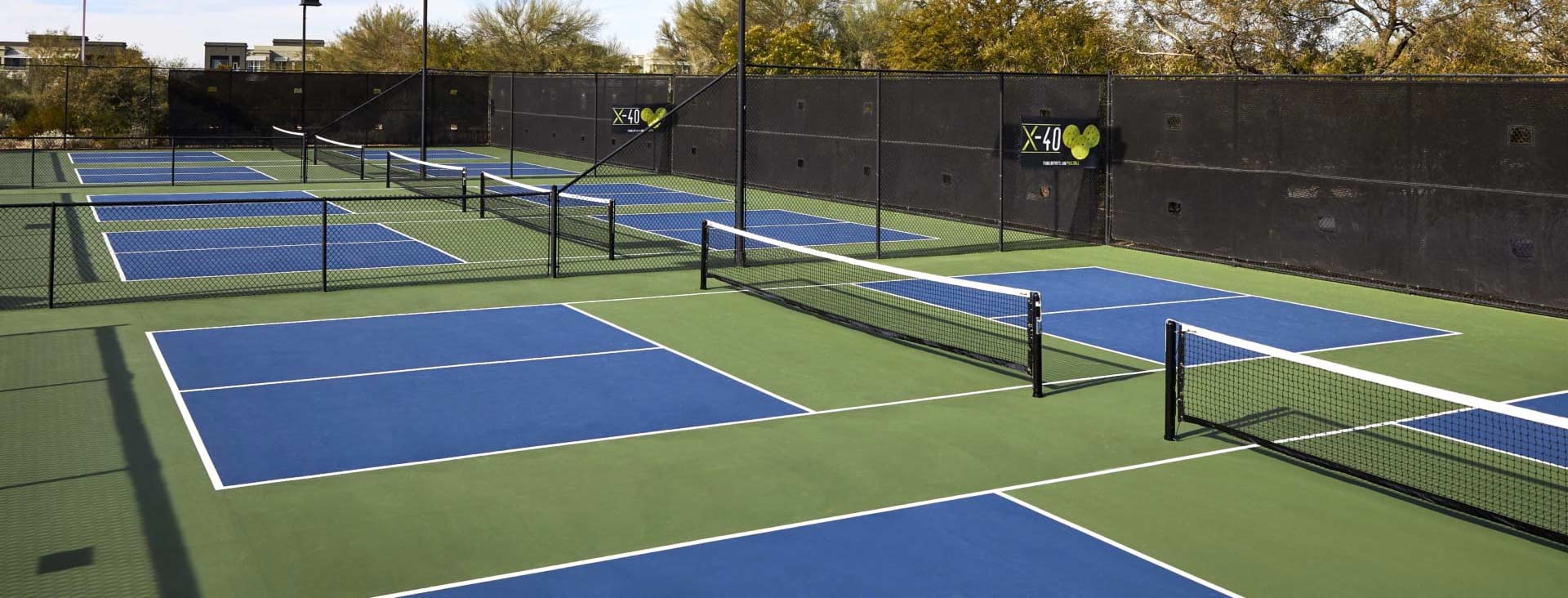Trick Consider the Building And Construction of Pickleball Courts: From Site Option to Final Finishes
The construction of pickleball courts encompasses a series of critical elements, starting with the selection of an appropriate site that stabilizes availability with ecological factors to consider. Important elements such as court measurements, surface products, and water drainage systems substantially impact not just the high quality of play but also the long life of the facility. Moreover, interest to lights and ending up touches can raise the overall experience for gamers and viewers alike. Understanding exactly how each of these elements interrelates may expose understandings that are frequently neglected, motivating a closer examination of best techniques in court building.
Website Option Requirements
When starting the building of pickleball courts, it is necessary to pin down the site selection standards that will certainly make sure optimum playability and access. The location has to be quickly reachable for gamers, preferably situated near houses or area facilities, to encourage engagement.
In addition, the surface needs to be level and steady, as unequal ground can bring about safety threats and affect gameplay. Sufficient drainage is additionally vital; picking a site with excellent water overflow will certainly help maintain court conditions throughout damaging climate.
One more essential consideration is the availability of utilities. Accessibility to electrical power and water is essential for lights and upkeep objectives. Additionally, distance to parking facilities is important, helping with very easy gain access to for gamers and spectators alike.
Ecological variables can not be ignored; all-natural color from trees can boost gamer convenience, while direct exposure to dominating winds might disrupt play. Zoning policies and community assistance must be taken into consideration to make sure that the task straightens with local guidelines and receives the support it needs for effective application. By meticulously reviewing these criteria, stakeholders can create a welcoming and practical environment for pickleball lovers.
Court Dimensions and Design
To ensure ideal gameplay and adherence to policies, the dimensions and format of pickleball courts have to be very carefully defined. A common pickleball court gauges 20 feet in size and 44 feet in size for both songs and doubles play. The recommended layout consists of a non-volley area, commonly referred to as the "kitchen area," expanding 7 feet from the net on either side. This location is important, as it affects gamer positioning and shot choice - Illinois and midwest.
The internet elevation is evaluated 36 inches at the sidelines and 34 inches at the center, creating a slight dip that impacts sphere trajectory. Court markings are just as vital; lines ought to be 2 inches vast and unique in shade to make sure exposure.
Additionally, a barrier zone surrounding the court is advisable, typically extending 5 to 10 feet past the sidelines and standards to fit gamers' activities and boost security. Appropriate layout and measurements not just guarantee conformity with official guidelines however also boost the general playing experience, accommodating both entertainment and competitive play. Careful planning in these locations is critical to the successful building and construction of pickleball courts.
Surface Material Options
Picking the best surface area product for pickleball courts is important for guaranteeing optimum player efficiency and security. The choice of surface area can considerably influence gameplay, including ball bounce, grip, and gamer comfort.
There are numerous choices available, each with its unique characteristics. Asphalt is a preferred choice as a result of its sturdiness and low maintenance needs. It offers a strong playing surface that can hold up against different climate conditions however might require routine resurfacing.
Concrete is another commonly made use of material, using outstanding durability and a smooth coating. It enables constant round bounce but can be difficult on gamers' joints, making it much less desirable for long-lasting play without appropriate padding.
For you could check here those seeking enhanced comfort and shock absorption, supported acrylic surface areas present a practical choice. These surface areas incorporate a base layer with an acrylic topcoat, offering enhanced grip and a softer feeling, which is advantageous for minimizing the threat of click this site injuries.
Last but not least, synthetic lawn is getting grip, specifically for multi-purpose facilities. Its flexibility and lower maintenance needs make it an appealing alternative, though it might not give the same round feedback as traditional hard courts. Careful consideration of these options will ensure an optimum having fun setting.
Water Drainage and Lights Factors To Consider
Proper water drainage and effective illumination are essential components in the construction of pickleball courts, dramatically influencing both playability and safety and security. Adequate drainage systems prevent water build-up, which can lead to unsafe surface areas and damages to the court framework.
Lighting is similarly important, particularly for courts planned for night use. Proper illumination boosts visibility, ensuring that players can see the round clearly and reducing the risk of mishaps. The placement of lights components need to be tactically planned to eliminate darkness and provide even distribution of light across the court. LED lights are recommended for their energy effectiveness and durability, offering brilliant lighting while reducing operational expenses.

Last Finishes and Maintenance
After resolving drain and illumination considerations, focus turns to the final finishes and recurring upkeep of pickleball courts. Typical options consist of acrylic finishes and specialized sports surfaces that supply ideal traction and padding.

Seasonal maintenance could include resurfacing every couple of years, depending on usage and ecological factors. Appropriately maintaining internet, court lines, and surrounding locations is just as essential to supply a safe and pleasurable having fun experience. By spending in quality surfaces and sticking to an organized maintenance timetable, center owners can ensure their pickleball courts stay in superb condition for many years to find.
Verdict
To conclude, the successful construction of pickleball courts rests on careful focus to numerous key elements. Site choice must focus on accessibility and terrain stability, while court measurements and format must follow optimal requirements for gameplay. The option of surface material substantially affects gamer security and performance. In addition, effective drainage and sufficient illumination add to court longevity and visibility. Top quality surfaces and a robust upkeep schedule are crucial for protecting the court's condition, enhancing the overall experience for gamers and viewers alike.